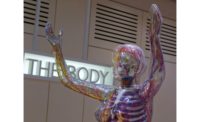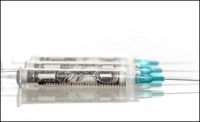Last month I showed you how humans discharge excess heat, when necessary, to keep our core temperature within the 1-degree (centigrade) zone essential for survival. Now that autumn is bringing cooler weather to many of us, let’s see how our bodies ramp up to keep us warm as outside temperatures fall. We can then ask if there are any takeaway lessons for us to consider when we’re designing energy-efficient ways to heat our buildings.
When temperatures decrease too much, most vertebrates, including humans, use two mechanisms to increase heat production. The first way is by involuntary shivering, where muscle contractions convert stored chemical energy into kinetic energy with heat as a byproduct. The second non-shivering way occurs in an unappreciated type of adipose tissue known as brown fat. This is not the same as white fat, which stores most of our body’s excess calories and makes our clothes tight.
In contrast to white fat, brown fat is metabolically active. When mammals need extra heat, such as immediately after birth, during a fever, or when thermal demands cannot be met with shivering, heat production in brown fat is activated. A special “uncoupling protein” (UCP) called thermogenin channels extra fuel away from storage in white fat, and heat is generated instead. While it has been well known that infants and hibernating animals carry large amounts of brown fat, until recently, we thought that adult humans had lost their stores. We now know that not only do adults have brown fat, but under certain conditions, white fat is actually converted into heat-generating (and weight-losing) brown fat. This brown fat activity in mammals not only enhances neonatal survival, it also allows for humans to have active, non-hibernating lives in cold surroundings, probably enhancing our evolutionary success.
Despite the survival benefits, increasing our core temperature through the inefficient burning of fuel comes with a high metabolic cost. The generation of enough heat to raise our body temperature only 1°C requires a 12.5 percent increase in our metabolic rate.
After a month of exposure to mild cold temperatures, independent of seasons, the participants had a 42 percent increase in brown fat volume, a 10 percent increase in fat metabolic activity, and improved insulin sensitivity after a meal. These findings suggest that in cool surroundings, humans can actually increase their brown fat stores and gain the health benefits, such as losing weight, that accompany inefficient glucose metabolism.
In a person with an overload of stored white fat (obesity) and the comorbidity of insulin-resistant diabetes, the uncoupling of excess caloric intake from ongoing storage in white fat could be a good result. Not surprisingly, researchers are now looking for ways to intentionally convert white fat to brown.
While inefficient fuel use for thermogenesis might be good for some humans, the opposite pathway — reduction of excess fuel use in heating — should be chosen for buildings. If the equation from human physiology showing a 12.5 percent loss in heating efficiency to compensate for a 1°C increase in temperature holds true in buildings, how much fuel is wasted in a poorly insulated building? As construction technology and mobility of materials make glazing and other low-insulation materials universally available, let’s not forget the “metabolic price” of high fuel bills and carbon dioxide emissions. Heating systems and building envelopes were designed according to local climates for centuries in vernacular building design with beautiful and efficient results.





